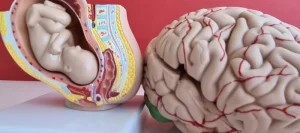
The traits of antisocial personality disorder include regular fighting and assaults, criminal activity, impulsiveness, deceitfulness, a lack of remorse, and an inability to accept responsibility for one’s own actions. This may contribute to the group’s binge drinking behavior, the highest of the five groups, with people consuming up to 17 drinks at a sitting. Studies have shown that people with ASPD are 21 times more likely than usual to develop an alcohol dependency in their lifetimes. Individuals who classify as functional alcoholics often struggle with mental health, and many individuals in this category commonly report depression and other mood disorders as a result of their behaviour. 77% of chronic severe subtypes have close relatives suffering from alcoholism, and more than 80% of this group struggle to stop their alcohol dependence. With acute alcohol withdrawal, more than 90% find themselves subservient to alcohol, despite the terrible physical and mental symptoms it causes.
Excessive Alcohol Use Linked with Higher Risk for 6 Types of Cancer
The problem with this analysis was that Cloninger’s two subtypes were based on a study of 360 male patients being treated for alcoholism in Veteran’s Administration hospitals. Thus the data was therefore not a representative sample of men and women, and it also ignored the 25% of alcoholics who never seek or receive treatment. Alcoholism is a serious substance abuse issue facing more than 15 million Americans, and treating all alcoholics the same has provided unsatisfactory results. Healthcare specialists know that alcoholism can affect people differently for a range of reasons. Studies like this one help expand the ways we can approach alcoholism to help those in need the most effectively. If no two people are alike, then no 15 million people can possibly be alike either.

What Are the Different Types of Alcoholism?
Chronic severe alcoholics are the oldest, usually in their late 40s to early 60s and have the most chronic and severe form of alcohol dependence. People in the young antisocial subtype often begin drinking and using drugs at a very young age, and have a history of criminal behavior, violence, or impulsivity. It is often said that there’s no one-size-fits-all treatment plan for alcohol addiction.
What Are the Symptoms of Alcoholism?

They also experience the highest rate of emergency medical attention because of their drinking. Young antisocial types have the highest rate of other substance abuse disorders, whether it be cigarettes, cannabis, opioids, cocaine or meth. They also binge drink far more than any other group, but less frequently. They start drinking at an even younger age than the young adult type, usually around 15.
- This group has the highest rates of drinking, consuming alcohol on an average of almost 248 days a year and binge drinking on 69% of them with a maximum of 15 drinks.
- Moreover, they did not lead to the development of theories explaining the etiology, manifestations, and consequences of alcoholism, because they did not propose verification procedures to test assumptions and predict behavior.
- Most intermediate familial alcoholics begin drinking around age 17 and develop alcoholism later in life, around age 32.
Identifying oneself or a loved one with an alcohol problem and categorizing them in one of the five categories based on the classification of alcoholics can help recognize what kind of treatment will be suitable for the patient. Professional rehabilitation and treatment facilities can help patients determine what form of treatment is optimal for them based on their specific circumstances and conditions. The sooner chronic alcoholism is identified, the better it could be treated and managed. Such severe consequences could be avoided, and alcoholics can start their lives in recovery. Among all alcoholic subtypes, the Chronic Severe alcoholic is the most likely to seek treatment – two-thirds will go to alcohol rehab. Generally, these individuals started drinking at a young age, though they are now middle-aged or older and often struggle with antisocial personality disorder and/or trouble with the law.
There’s no one way to describe a ‘typical alcoholic’ since alcoholism develops differently from person to person. However, the National Institutes of Health (NIH) performed a study to categorize different alcoholics to note their similarities. Functional alcoholics consume alcohol daily or at least several times per week. The effort was made to categorize different types of alcoholics, partly to dispel the myth that there is a typical alcoholic. Before we dive into the different types of alcoholics, let’s first establish what actually defines an alcoholic.
Daily drinking can have serious consequences for a person’s health, both in the short- and long-term. Many of the effects of drinking every day can be reversed through early intervention. That is why alcohol detox and alcohol withdrawal treatment is administered by medical professionals. The NIAAA researchers found that there were five distinct patterns of alcohol dependence.
- There is help and support (including support groups) available to help them successfully recover from their illness.
- Help for them can be found through rehabilitation programs, self-help groups, detox programs, private specialists, social workers, and psychiatrists.
- And 47% of the members of this group exhibit antisocial personality disorder, the second highest rate of any subtype.
- Even if you don’t yet have AUD, problematic drinking and alcohol abuse should be addressed before it progresses to AUD.
- More generally referred to as therapy, behavioural treatments are the most common recommendation for individuals starting rehabilitation.
Signs and Symptoms of Alcohol Addiction

”This article provides some of the historical attempts about the classification of alcoholics and explains the five different types of alcoholics as they are currently understood. A third of Functional alcoholics have a multi-generational family history of alcohol abuse. People who are ready to begin recovery from being a functional alcoholic often need to treat underlying mental health issues that have been previously masked by alcohol use. Nearly the same size as the last type, this group represents 19% of US alcoholics.
Excessive Alcohol Consumption Increases Risk For Six Types Of Cancer: Study
It typically includes individual and group counseling and medication-assisted therapy like naltrexone (Vivitrol). It typically includes medically monitored withdrawal, which helps reduce symptoms of withdrawal. It can also help prevent seizures or other complications that may arise. Treatment typically includes individual and group counseling, medication, and other therapies.

Intermediate Familial Subtype
Different types may require tailored interventions based on their specific needs, characteristics, and underlying factors. Treatment may involve a combination of medical interventions, counseling, support groups, behavioral therapies, and addressing co-occurring disorders. Confirmation of the hypothesis that only two broad categories of alcoholics exist would represent an important breakthrough for theory development and treatment matching. Treatment matching and patient placement also might profit from this knowledge, 5 types of alcoholics provided that different therapeutic approaches and treatment settings prove to be differentially effective with different types of alcoholics. Despite one-and-a-half centuries of progress and a remarkable acceleration of interest in alcohol research in the past two decades, these critical issues continue to define the challenge as well as the promise of typology theory. Thorough assessments can help treatment providers to determine what the right type and level of care might be for a person battling alcohol addiction.

